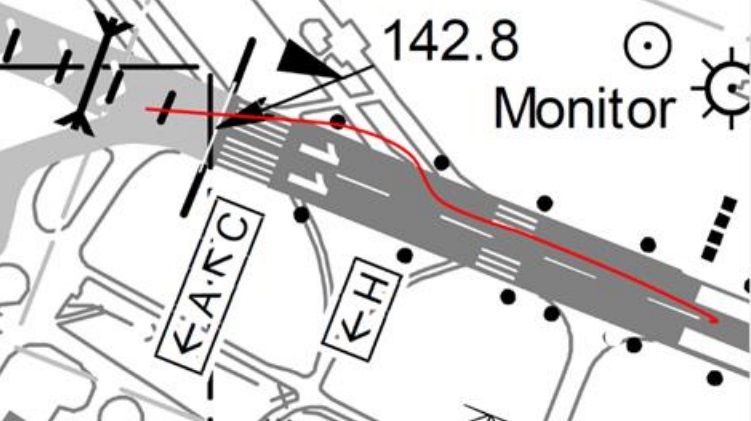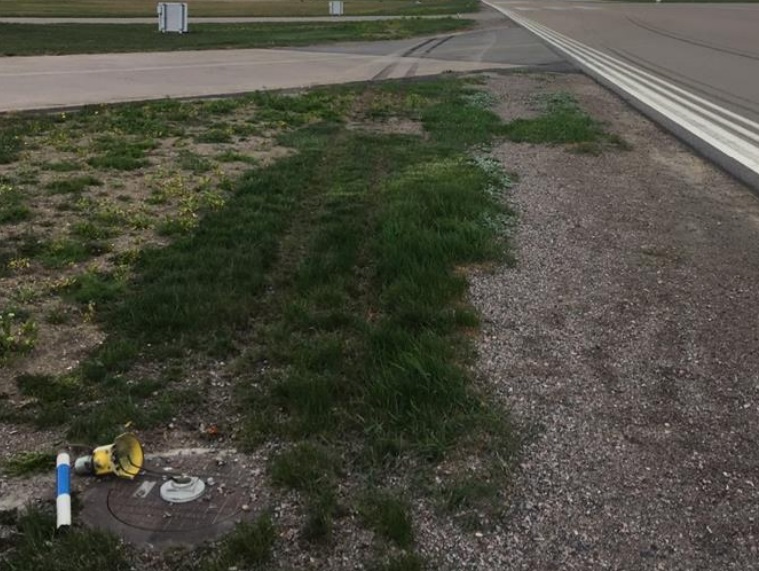S2000 Runway Excursion at the Start of the Take Off Roll (SE-LRA at Linköping)
On 8 May 2019, Saab 2000 SE-LRA, operating as a transport flight for Saab, suffered a runway excursion at the beginning of the takeoff roll from Linköping/Saab airport, in Sweden.
The Swedish Accident Investigation Board (the Statens Haverikommission [SHK]) say in their safety investigation report that:
The captain taxied to the runway using the nose wheel steering tiller without any difficulties. After lining up, the crew conducted the daily propeller overspeed test in accordance with the checklist and proceeded directly with the takeoff run. It is clear from the captain’s interview that for some reason they omitted to depress the tiller and activate the nose wheel steering. The result was a quick aircraft yaw to the left.
The aircraft left the runway surface with the left main landing gear just before reaching the two diagonal military taxiways, passed one of them and headed back on to the runway where it slowed down and stopped in the middle of the runway.
The air traffic controller in the tower noted that the aircraft yawed abruptly to the left but did not see the aircraft actually leaving the runway surface. After the aborted takeoff, the air traffic controller informed the crew of his observations.
Damage to a runway edge light was discovered on inspection.
SHK Safety Investigation and Analysis
Data from the flight data recorders (DFDR and QAR) were available and SHK has analyzed the relevant parameters. However, data from the nose wheel steering angle and brake pressure are not recorded by DFDR/QAR. The nose wheel steering indicated no technical faults before or during the incident.
[W]eather and prevailing runway conditions were within the aircraft’s limitations. The dry surface allowed for good friction and aircraft control via nose wheel steering and wheel braking.
The take-off was initiated directly from partial power, which resulted in an abrupt course change and provided for only a very limited time to recover before the aircraft left the runway.
Contributing was the fact that the nose wheel angle probably was not parallel with the runway heading at brake release. One possible explanation for this could be the aircraft vibrations caused by the propeller test, where both propellers in turn reduce the power momentarily.
SHK also note the pilot regularly flew the Bombardier Global 6000 (BD-700) which has a steering hand wheel that does not, unlike on the Saab 2000, need to be pressed to select.
SHK Conclusions
The direct cause of the runway excursion was a lapse in activating the nose wheel steering tiller during the initial takeoff phase. This led to a delayed correction of the aircraft’s lateral deviation.
A contributing factor may have been that the pilot alternated between flying two aircraft types where the nose wheel tiller is used in different ways.
No safety recommendations were made.
Safety Resources
On error management:
…and our review of The Field Guide to Understanding Human Error by Sidney Dekker presented to the Royal Aeronautical Society (RAeS): The Field Guide to Understanding Human Error – A Review
- Runway Excursion Exposes Safety Management Issues
- G200 Leaves Runway in Abuja Due to “Improper” Handling
- CRJ900 Skids Sideways Down Finnish Runway
- AAIB: Human Factors and the Identification of Saab 2000 Flight Control Malfunctions
- Twin Otter Nose Wheel Steering Misused in Runway Excursion
- Procedural Drift at Saab 340 Operator Leads to Taxiway Excursion
- Gulfstream G-IV Take Off Accident & Human Factors
- Confusion of Compelling, But Erroneous, PC-12 Synthetic Vision Display
- C-130J Control Restriction Accident, Jalalabad
- Easyjet A320 Flap / Landing Gear Mis-selections
- Premature A319 Evacuation With Engines Running
- Gripen Main Landing Gear Damaged During Unstabalised Short Field Landing
- Unalaska Saab 2000 Fatal Runway Excursion: PenAir N686PA 17 Oct 2019
- UPDATE 9 December 2020: A Saab 2000 Descended 900 ft Too Low on Approach to Billund



Recent Comments